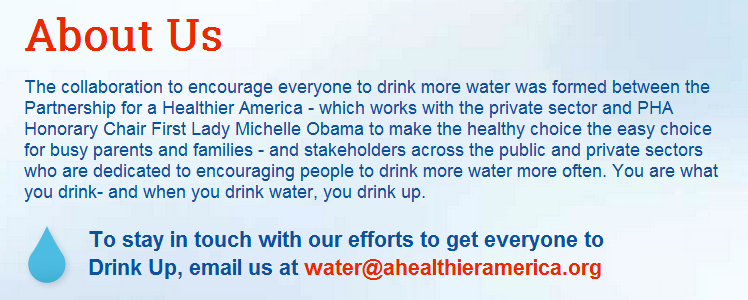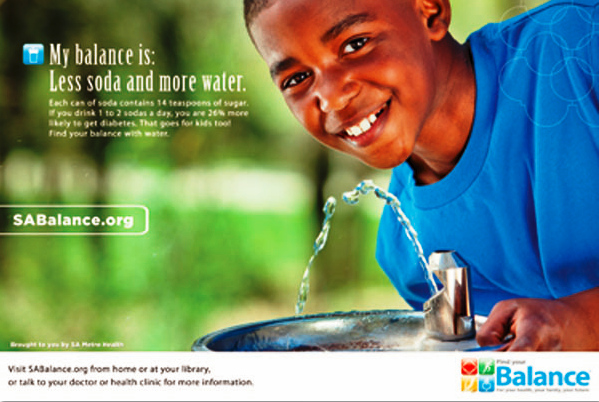My monthly Food Matters Q and A column in the San Francisco Chronicle appears this weekend:
Are 8 glasses of water a day really necessary?
Q: It’s such a hot summer and I’m sweating all the time, but I don’t feel thirsty. Do I have to force myself to drink eight glasses of water a day?
A: San Franciscans: Please, no complaints about summer fog. Where I live, it’s hot and humid, and staying hydrated takes work.
Everybody needs water to replace the amounts lost through breath, sweating and excretions. In comfortable temperatures, the amounts lost conveniently come out to about a quart of water for every thousand calories consumed. If you eat 2,000 calories a day, you need about 2 quarts of water.
But water equivalents – juice, coffee, tea, soda and anything else with water in it, including food – work just as well. Watermelon is called watermelon for a reason. It is mostly water and perfect for hot summer days.
Mostly, you don’t have to keep track of how much liquid you drink. Thirst takes care of it. If you need water, you feel thirsty and you get something to eat or drink. Problem solved.
But thirst doesn’t work very well at times when it is most needed – in very hot weather, at high altitudes or during heavy exercise. People in hot climates, mountain climbers and athletes have to force themselves to drink.
How can you tell when you need water? This is easy. Look at your urine. If you are dehydrated, your urine is bright yellow and smelly. If you are getting enough water, your urine is pale and practically odorless.
Except for these exceptions, hardly anyone needs to worry about how much water to drink. That “hardly anyone,” however, also includes children and the elderly, who tend not to regulate water balance very well. Beyond these exceptions – as you shivering San Franciscans can attest – thirst works well as a guide to how much to drink.
Q: A young woman I know got a nasty combination of altitude sickness and electrolyte imbalance when she was hiking in the Sierra Nevada. She sipped water constantly, ended up drinking too much, and got so sick from lack of salt that she had to be airlifted out. Are those Gatorade-like drinks that replenish electrolytes any better than plain water when you are hiking or exercising hard?
A: Those drinks might help, but your friend also must not have been eating much on that hike. Foods are excellent sources of electrolytes.
Electrolytes are minerals like sodium, potassium and chloride that help balance blood acidity. They are lost in sweat, which is why sweat tastes salty. Our bodies have plenty of electrolytes. Salt, for example, is usually eaten in great excess. Normal sweat losses don’t matter much, unless we are vigorously exercising or sweating profusely.
But sweating is easy to miss at high altitudes because it evaporates so quickly. The higher the altitude, the easier it is to overlook fluid and electrolyte losses.
High altitude also disrupts normal appetite, so climbers don’t feel hungry or thirsty. Elite climbers know to pack lightweight foods and supplements made especially for that purpose, and to force themselves to eat and drink frequently.
Drinks advertised as electrolyte supplements do indeed contain electrolytes. Gatorade Orange Sports Drink, for example, contains water as the first ingredient, followed by sugars (sucrose syrup, high-fructose corn syrup), flavors and three sources of electrolytes – salt (sodium chloride), sodium citrate and monopotassium phosphate – along with color additives and thickeners.
If you are an athlete working out for an hour or more, Gatorade might replenish your sodium, potassium and chloride more quickly than food can, but not by much. An 8-ounce Gatorade serving provides just 1 percent of the daily value for potassium (30 milligrams) and 5 percent of the daily value for sodium (110 milligrams).
Gatorade is a sweetened drink supplemented with a few salts, but with less sugar and fewer calories than a regular soft drink. On the basis of electrolytes, PepsiCo, its parent company, markets Gatorade as a better choice than any other drink, including water. Nothing, says PepsiCo, rehydrates, replenishes and refuels athletes better. According to Advertising Age, the company backs up that contention with a hefty advertising budget – $118 million in 2009.
Studies do show that replenishing electrolytes is a good thing to do at high altitude or during any other extreme activity. But hikers can do this with food or supplements without having to carry additive-laden sugary drinks in a backpack.
An average carrot, for example, provides 230 milligrams of potassium and 50 milligrams of sodium. Many other vegetables have similar electrolyte profiles. Nobody wants to carry heavy foods up a mountain, which is why sports shops sell dehydrated foods and special supplements for high-altitude climbers.
It’s a good idea to drink water at high altitude, but also to eat plenty of good food at regular intervals.
Marion Nestle is the author of “Food Politics,” “Safe Food,” “What to Eat” and “Pet Food Politics,” and is a professor in the nutrition, food studies and public health department at New York University. E-mail her at food@sfchronicle.com, and read her previous columns at sfgate.com/food.
http://sfgate.com/cgi-bin/article.cgi?f=/c/a/2010/07/30/FDD51EK7K0.DTL
This article appeared on page K – 5 of the San Francisco Chronicle







